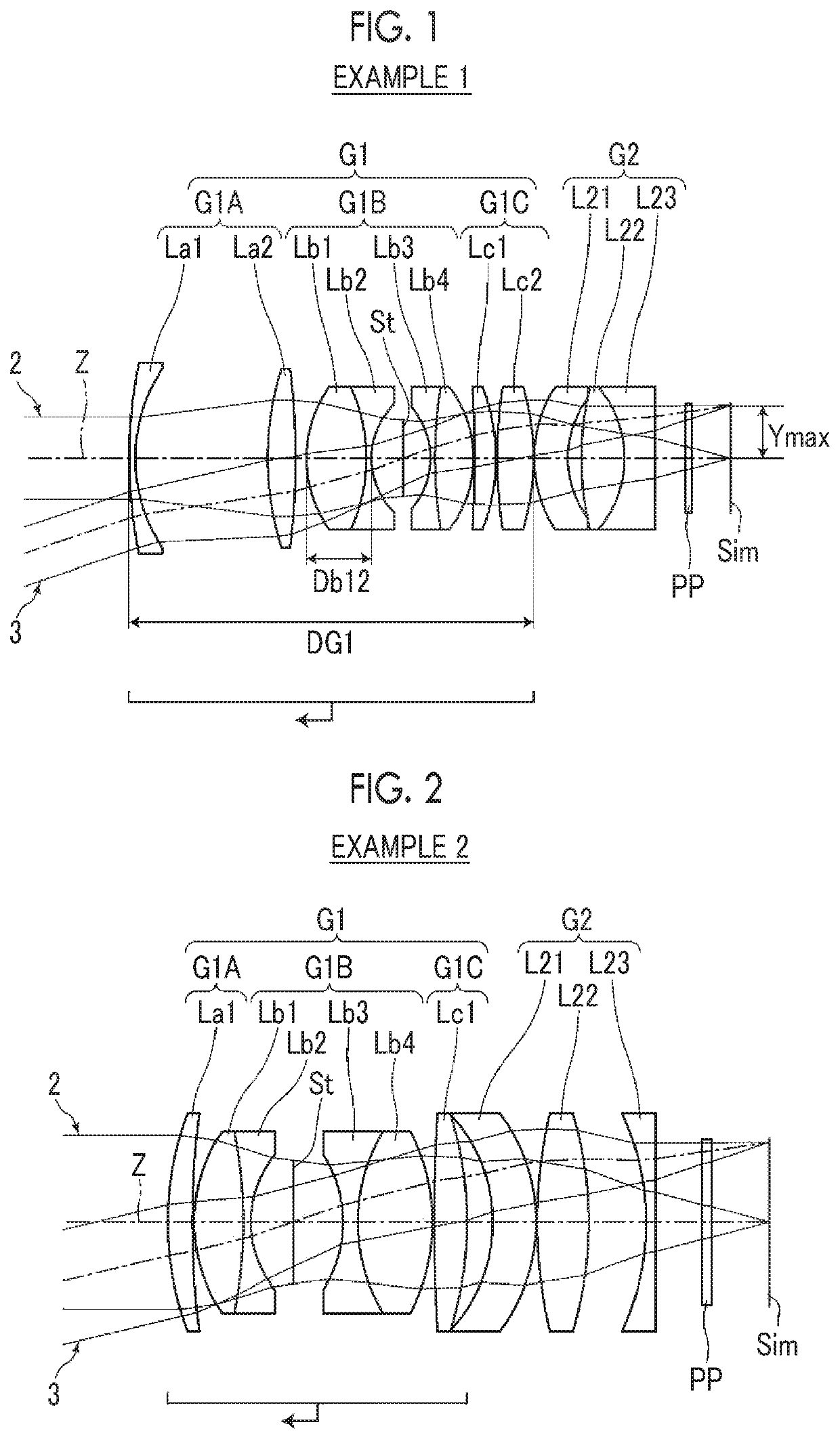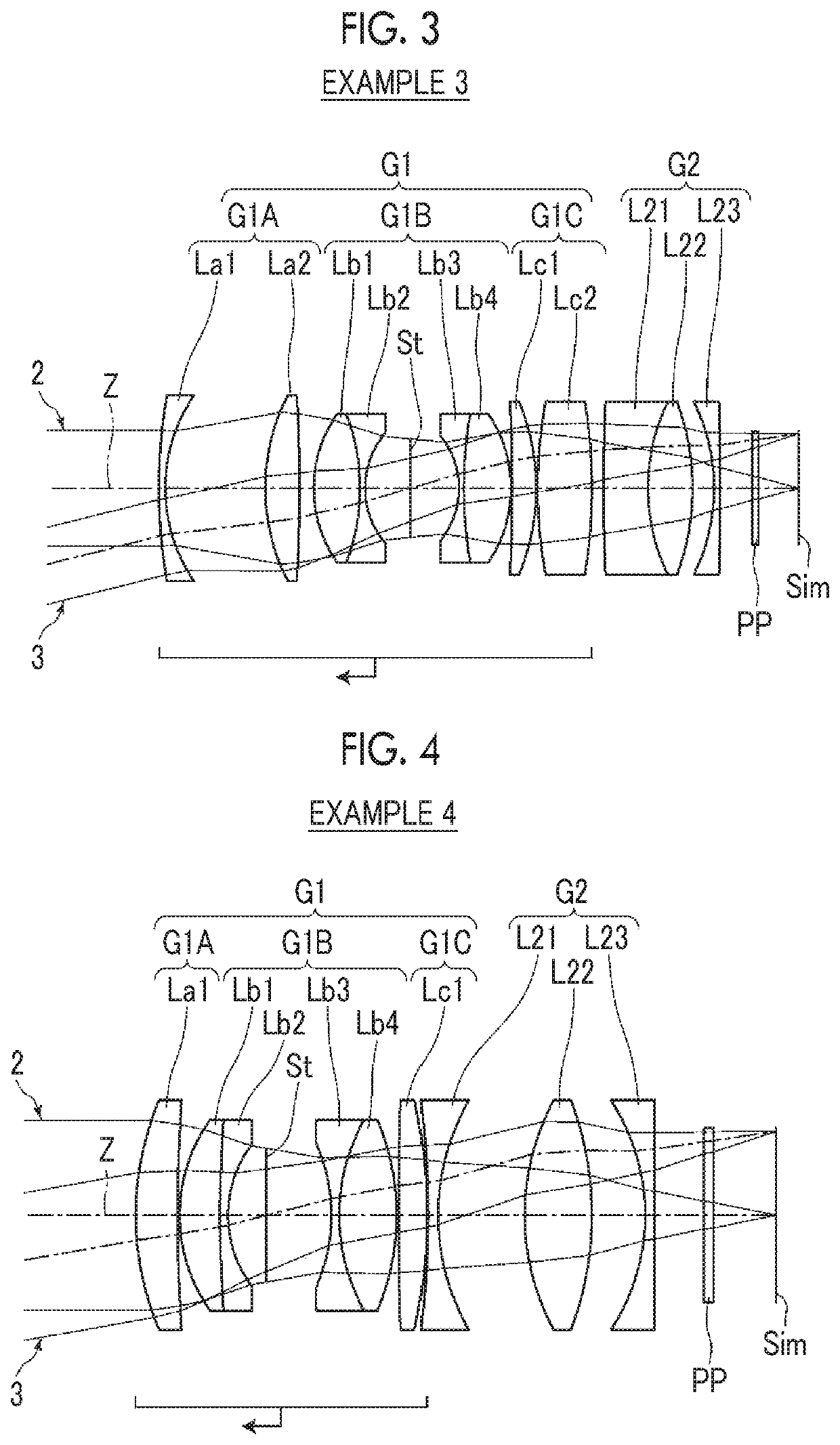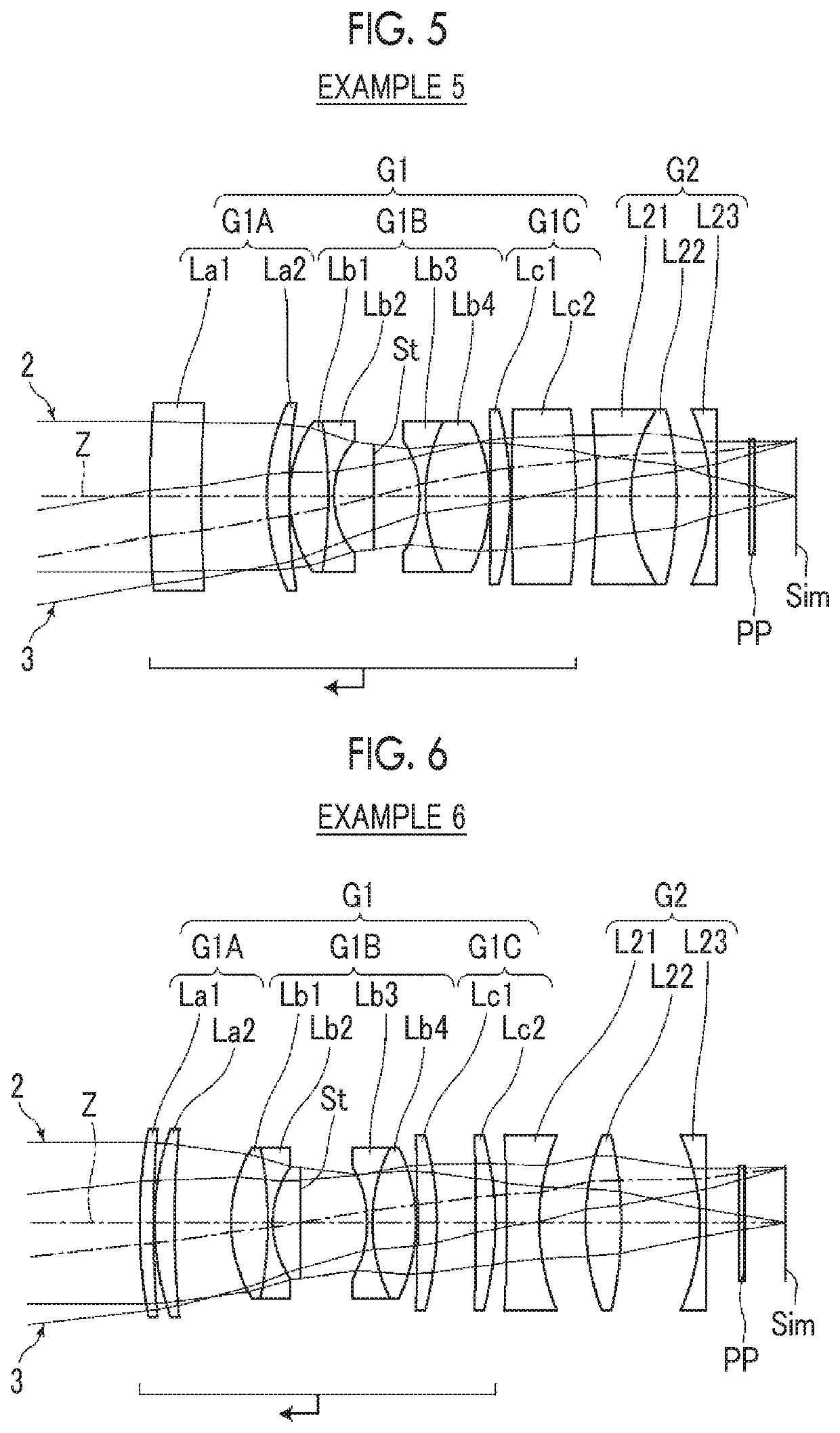Imaging lens and imaging apparatus
a technology of imaging apparatus and lens, applied in the direction of optics, optical elements, instruments, etc., can solve the problems of large field curvature and large astigmatism fluctuation during focusing, and achieve the effect of suppressing astigmatism fluctuation, small field curvature, and favorable optical performan
- Summary
- Abstract
- Description
- Claims
- Application Information
AI Technical Summary
Benefits of technology
Problems solved by technology
Method used
Image
Examples
example 1
[0055]A lens configuration of an imaging lens of Example 1 is shown in FIG. 1, and a configuration and a method thereof shown in the drawing is as described above. Therefore, repeated description is partially omitted herein. The imaging lens of Example 1 consists of, in order from the object side, a first lens group G1 having a positive refractive power, and a second lens group G2 having a positive refractive power. During focusing from the object at infinity to the close-range object, the entire first lens group G1 integrally moves from the image side to the object side, and the second lens group G2 remains stationary with respect to the image plane Sim. The first lens group G1 consists of, in order from the object side, a first-A sub-lens group G1A having a positive refractive power, a first-B sub-lens group G1B, and a first-C sub-lens group G1C having a positive refractive power. The first-A sub-lens group G1A consists of two lenses La1 and La2 in order from the object side. The ...
example 2
[0061]FIG. 2 shows a lens configuration of the imaging lens of Example 2. The schematic configuration of the imaging lens of Example 2 is the same as that of Example 1 except that the first-A sub-lens group G1A consists of one lens La1 and the first-C sub-lens group G1C consists of one lens Lc1. Table 3 shows basic lens data of the imaging lens of Example 2, Table 4 shows specification and variable surface distances, and FIG. 8 shows aberration diagrams thereof.
TABLE 3Example 2SurfaceNumberRDNdvd 134.684092.6591.8348142.72 296.726610.200 318.603185.1831.6180063.33 4-53.111400.8101.5407247.23 512.036654.547 6(St)∞5.353 7-14.250881.6201.6129337.00 819.927898.0001.6180063.33 9-22.476440.20010203.350673.5111.8348142.7211-41.27145DD[11]12-17.819034.6621.8466623.7813-20.440610.1001452.537685.5701.6180063.3315-42.346456.07016-30.223281.0001.7552027.51172525252.525255.00018∞1.0001.5163364.1419∞6.231
TABLE 4Example 2Infinity0.2 mf36.019—fnear—37.710FNo.1.882.242ω(°)28.824.4DD[11]2.79013.268
example 3
[0062]FIG. 3 shows a lens configuration of the imaging lens of Example 3. The schematic configuration of the imaging lens of Example 3 is the same as that of Example 1 except that the second lens group G2 has a negative refractive power. Table 5 shows basic lens data of the imaging lens of Example 3, Table 6 shows specification and variable surface distances, and FIG. 9 shows aberration diagrams thereof.
TABLE 5Example 3SurfaceNumberRDNdvd 190.392281.0001.6727032.10 227.1143715.722 333.685425.4011.8000029.84 4-232.997342.194 521.309137.2601.6180063.33 6-34.565350.8001.6200436.26 714.039597.142 8(St)∞7.481 9-13.833870.8001.6398034.471072.487897.3981.6180063.3311-21.802720.20012-264.076263.7621.6516058.5513-37.166190.2001476.833078.5521.6516058.5515-85.69829DD[15]16267.066577.0101.5168064.201732.625107.0001.6180063.3318-41.278573.36419-32.590031.0001.9108235.2520-426.721085.00021∞1.0001.5163364.1422∞6.295
TABLE 6Example 3Infinity0.2 mf34.489—fnear—33.716FNo.1.852.112ω(°)30.027.8DD[15]1....
PUM
 Login to View More
Login to View More Abstract
Description
Claims
Application Information
 Login to View More
Login to View More - R&D
- Intellectual Property
- Life Sciences
- Materials
- Tech Scout
- Unparalleled Data Quality
- Higher Quality Content
- 60% Fewer Hallucinations
Browse by: Latest US Patents, China's latest patents, Technical Efficacy Thesaurus, Application Domain, Technology Topic, Popular Technical Reports.
© 2025 PatSnap. All rights reserved.Legal|Privacy policy|Modern Slavery Act Transparency Statement|Sitemap|About US| Contact US: help@patsnap.com



